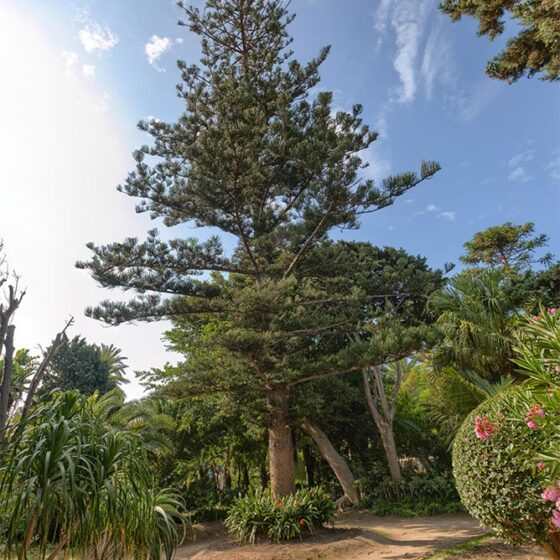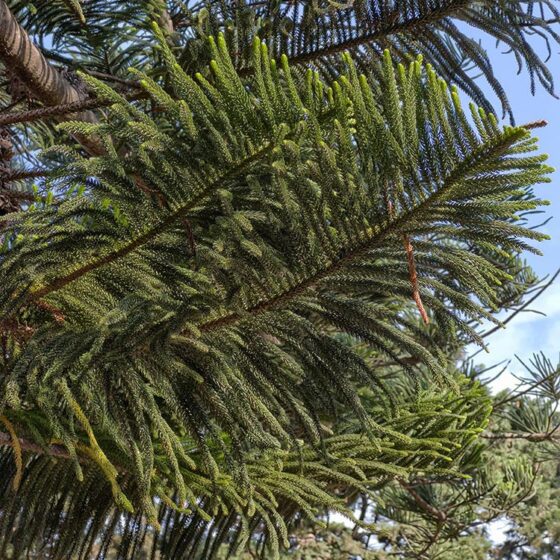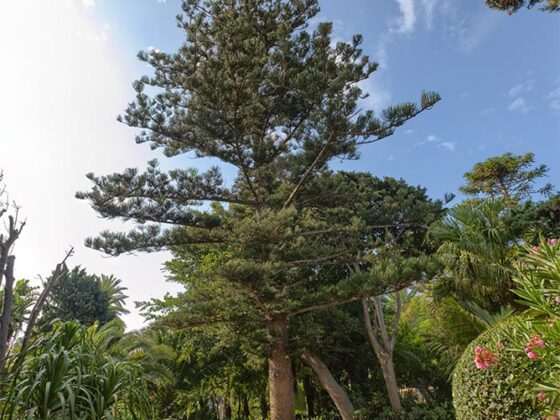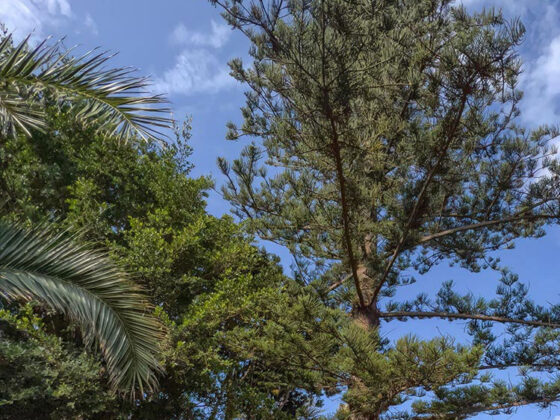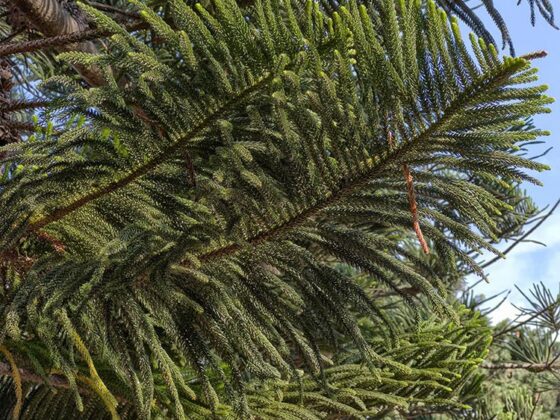Norfolk Island Pine
Araucaria excelsa
An endemic tree of the Island of Norfolk, to the east of Australia, was an island that was discovered by Captain Cook, an English sailor (1774), during his second trip around the world on board ship “Resolution“. He thought that the tree´s trunk would be able to provide masts. It was introduced in Europe by the English as a garden tree at the end of the 18th century.
The name of the genus, Araucaria, derives from the Araucanian or Mapuche Indians, who in turn, give their name to the Arauco, a region of Chile inhabited by another species of araucaria, A. araucana K. Koch, which was the first to be described and whose seeds served as food to these natives. The name excelsa derives from the Latin “excelsius“, the great.
The lower horizontal branches and the ascending upper branches form a cone-shaped structure of tree. It reaches 50 to 70 m in height. Its leaves are small, scaly and slightly curve towards the branch. There are seeds in a 12 to 15 cm rounded cone that have scales ending in a point.
It is cultivated as an ornamental piece, especially in coastal areas, as it is very resistant when in close proximity to the sea. There are specimens in Sanlúcar de Barrameda, El Puerto de Santa María, Puerto Real and San Fernando, places of old waterside joinery and caulking businesses. The centenarian specimens located in Genovés Park, Alameda de Apodaca and Marqués de Comillas, Plaza de Candelaria and Calle Tinte are of great importance in Cadiz.
Araucaria excelsa
Lamb.
Araucaria heterophylla
(Salisb.) Franco


